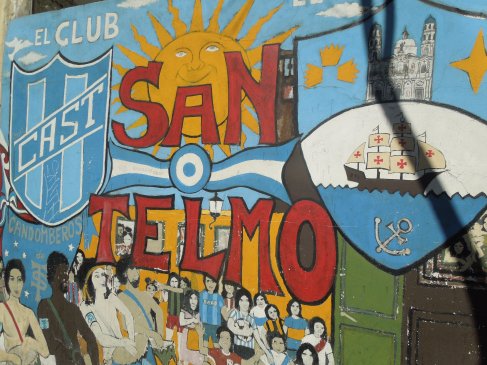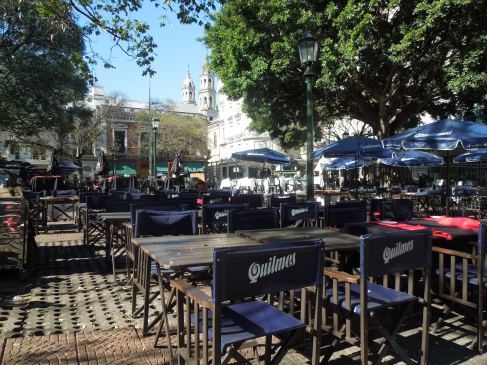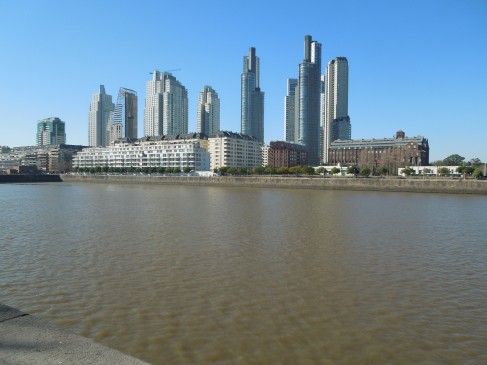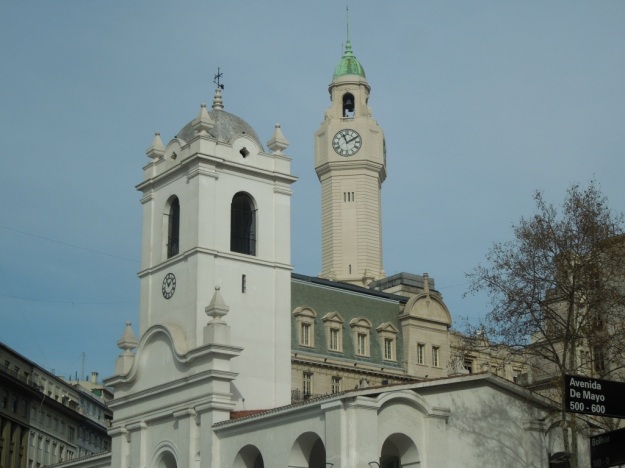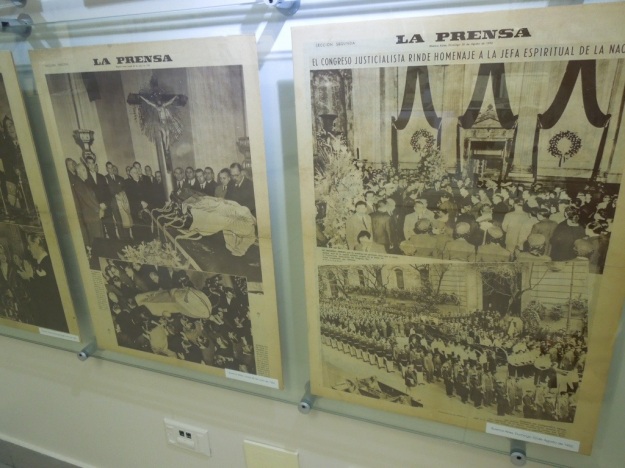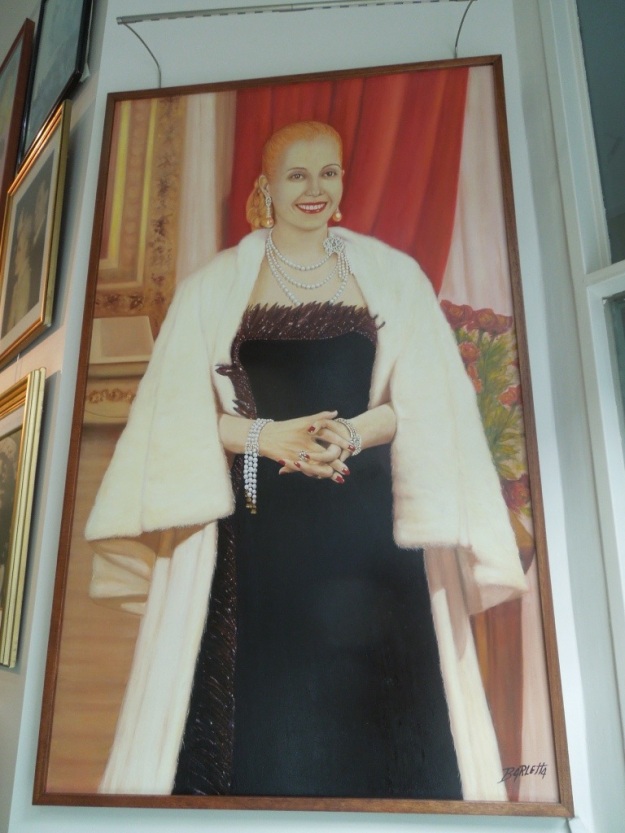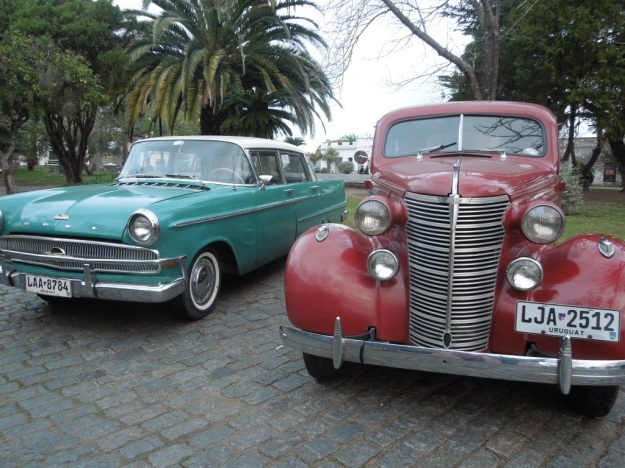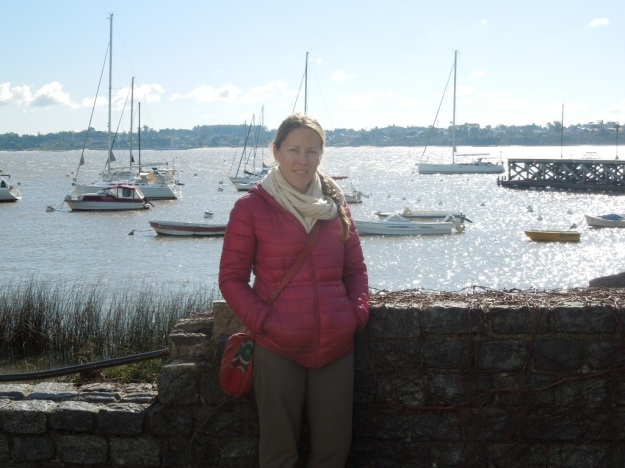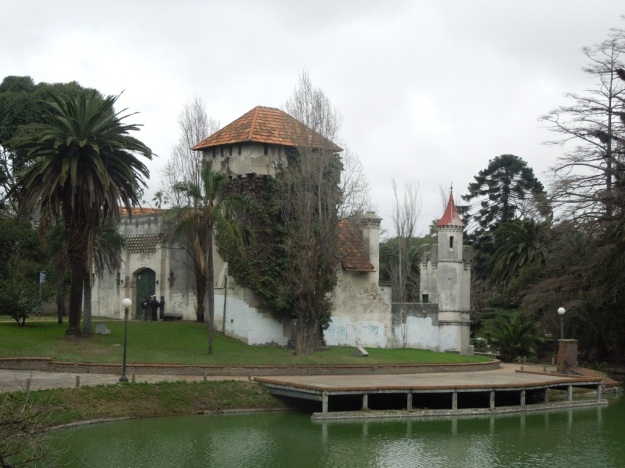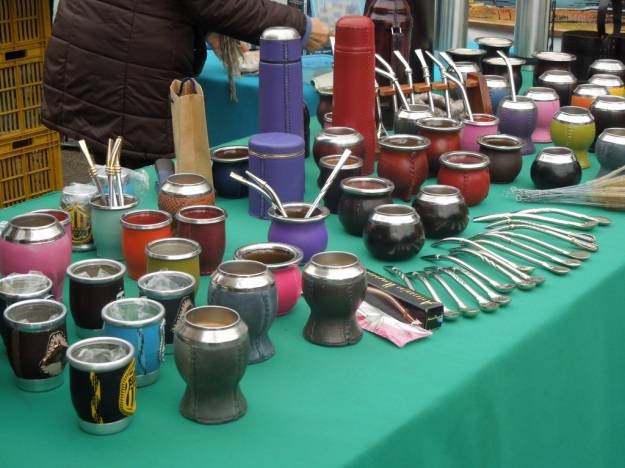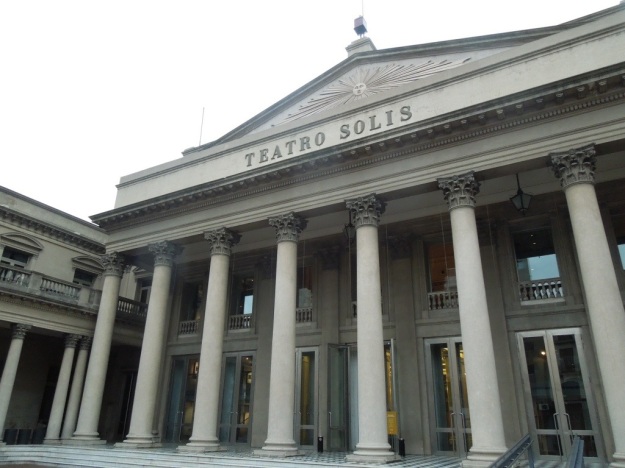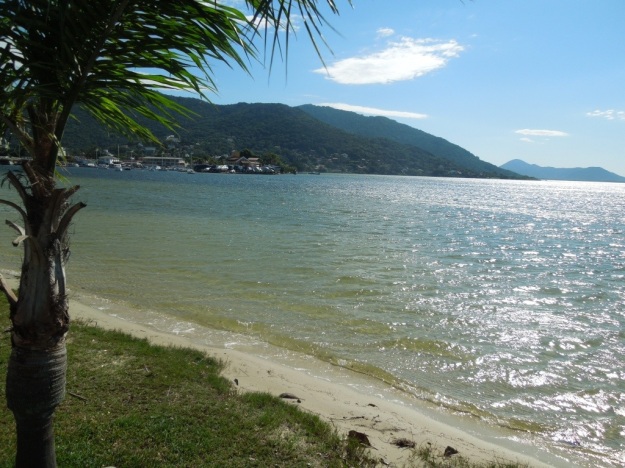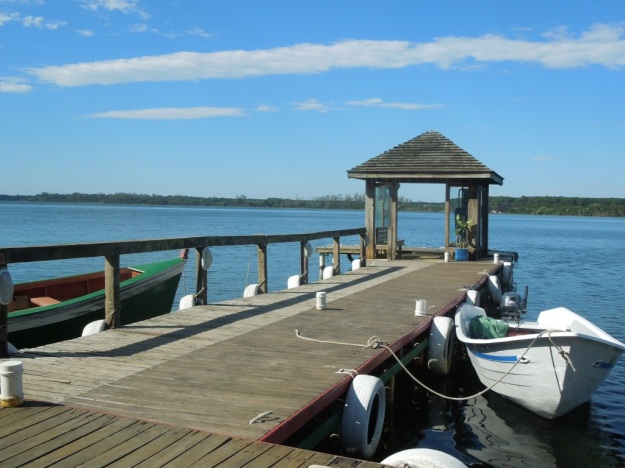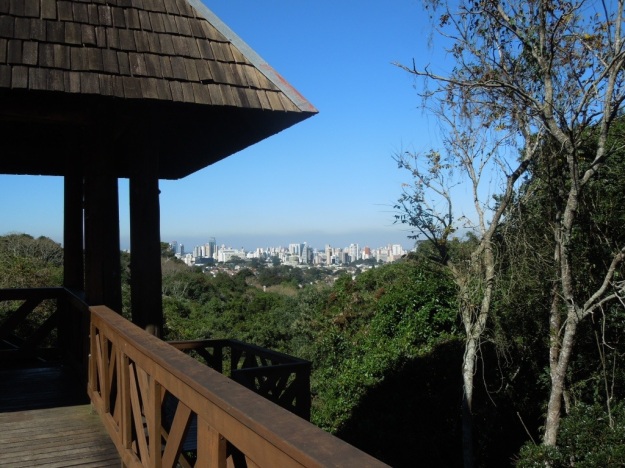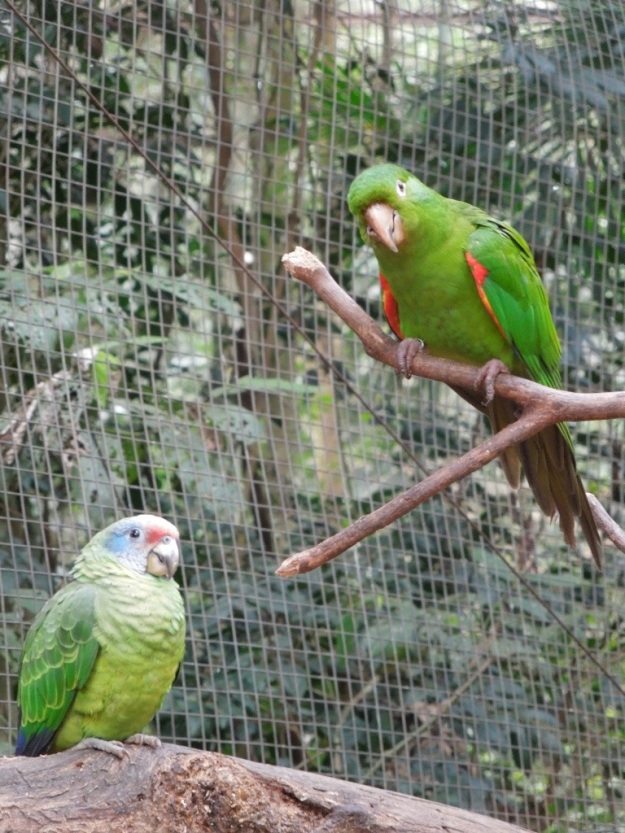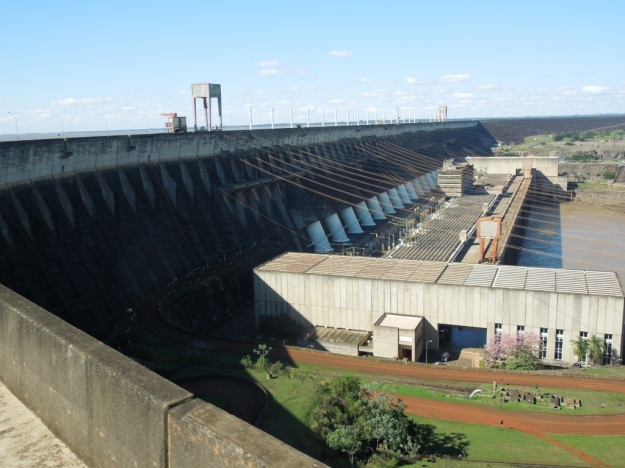The time has come to share my two cents on how to pack for a trip to South America. I was 100% happy with my packing: I used almost everything, and didn’t miss anything. Of course it was annoying to carry around lots of medication and first aid kits that I (thankfully) didn’t use; and I wish I could have worn my pretty clothes more often instead of spending day in and day out in my basic backpacker gear; but overall I didn’t have any regrets.
I used a couple of great sites for inspiration as I planned the trip, the most useful being Travel Independent and Worldly Nomads. Of course, although the basics will stay the same for everyone, the rest will depend on which countries you’re going to and at what time of year, and if you’re a solo traveller or travelling with someone so that you can share some things like toiletries… I was alone so I needed to bring absolutely everything in my own luggage, while I was expecting hot weather in the beginning and then heading into South American winter so I needed quite a range of clothes.
But first, my take on some of the most controversial discussions raging on the topic of packing for this kind of trip:
Size of the backpack: Every cool travel blogger recommends travelling with a small bag of a maximum of 40 litres, while making sure that you have space left over for things that you’ll buy along the way. This sounds great, and I did buy a small backpack – a beautiful teal one – and tried to fit everything in… but it was close to exploding, even with the use of vacuum packs to save space. In the end, I returned the small one and took my big old backpack, with lots of spare room as I left, and a weight of 13kg as I boarded the plane.
Backpack vs. suitcase: Beyond the size of the backpack, the next question is whether you should have a backpack at all. It’s called backpacking for a reason, you may say, and indeed you lose a bit of street cred if you arrive at a hostel with a trolley bag. BUT I’m leaning towards taking a suitcase on my next trip – I simply can’t see the benefit of having a backpack, except maybe as you climb the stairs to the upper floors of a hostel. Otherwise, a suitcase on wheels will be much more practical as you walk to the bus or to your accommodation, and will avoid the sore shoulders that I was left with after three months of lugging my big bag around. I’m 30 and I can do what I want.
Sleeping bag: I didn’t bring one – you don’t need it when you’re staying in hostels or hotels, and for things like the Inca Trail and the Salar de Uyuni tour you can rent a good one cheaply.
Jeans: A lot of sites tell you not to bring jeans. Qué?! I don’t understand this one at all. Well, if you’re only going to countries that are hot both during the day and at night then maybe this makes sense, but for the rest of us, jeans are indispensable in the cool evenings and, during winter, in the daytime as well. In fact, I wish I’d brought two pairs, as I ended up wearing the same ones every day for the last few weeks.
SLR vs point-and-shoot: I was very tempted to bring my SLR – I’m by no means a professional photographer, but even set to automatic the SLR gives me much better photos, in particular close-ups. But the fact remains that it is huge, and it is a complete magnet for thieves (I would have felt very self-conscious every time I brought it out; and carrying it around in a big Nikon case would not have been a good idea either…). My Nikon Coolpix has a 14x optical zoom which is great for wide shots, and the close-ups and portraits aint too bad either. If you’re an average Joe traveller, a point-and-shoot will be just fine; and if you want professional shots of the blue-footed booby on the Galapagos you can find them via Mr Google…
So without further ado, here is my list in all its glory:
Bags:
1 x big backpack (I don’t know how big it is, I can’t find it anywhere on the bag! Maybe 60l?)
1 x small backpack
1 x small handbag
6 x mesh bags to compartmentalise my clothes, including 1 for laundry
Shoes:
1 x flip-flops (for beach and hostel showers)
1 x hiking shoes
1 x comfortable sandals
1 x old ballerinas
1 x nice sandals for evenings*
(5 pairs?! I know! But most of them were slim and took up little space)
Trousers and shorts:
1 x pair of jeans
1 x cargo pants
1 x tracksuit bottoms
1 x denim shorts
1 x short white leggings
1 x long grey leggings**
Tops:
6 x vest tops
1 x short-sleeved t-shirt
1 x long-sleeved t-shirt**
1 x nice top for evenings
Dresses and skirts:
1 x casual short dress
1 x nice short dress for evenings
1 x maxi dress
1 x casual short skirt
Underwear and swimwear:
8 x pairs of knickers***
3 x bras – 1 strapless, 1 normal, 1 nice
3 x pairs of socks, including 1 for hiking
1 x bikini, with bag to put it in when wet
Jumpers and cardigans:
2 x cardigans
1 x merino wool jumper
Outerwear:
1 x light down jacket (I bought a great lightweight one that stuffed into nothing, from Uniqlo)
1 x light windbreaker (also tiny and from Uniqlo)
1 x warm pashmina
1 x light scarf
1 x cheap sunglasses
Additional clothes bought on the trip:
1 x alpaca jumper (I only wore this when my merino one was in the wash)
1 x pair of gloves
1 x woolly hat
1 x pair of warm socks
1 x rain poncho
1 x sun hat
1 x panama hat
For sleeping:
1 x sleeping bag liner
1 x pyjama vest top and shorts
1 x inflatable pillow, eye mask and earplugs
Toiletries:
Small bottles of shampoo, conditioner, shower gel, face wash, face cream, body lotion
Cleansing wipes
Deodorant, perfume
Razor
Nail travel kit including scissors, nail file and tweezers
Nail polish
Cotton buds
Toothbrush, toothpaste, floss
Lip salve with SPF, Vaseline
Sun cream, for face and body
Hand cream
Make-up for nights out – waterproof mascara, eyeliner, concealer, powder, blusher, lip gloss
Anti-bacterial hand gel
Wet-wipes
Tampons
Tissues
Hairbrush, hairgrips and elastics
Foldable wash bag with a hook to hang in the bathroom
Medication:
Insect repellent, after-bite cream
Malaria tablets, antibiotics, water purification tablets, Imodium, rehydration tablets
Motion sickness tablets and wristbands
EchinaceaFirst aid kit
Sterile needle kit
Migraine spray****
Electronics:
iPhone, iPad (some websites are still built in flash and don’t work on iOS, boo, hiss!)
Earphones
Kindle
Chargers and adapters*****
Nikon Coolpix camera
Admin:
Passport and ID
Photocopies of passport
VISA credit and debit card
Vaccination certificate
Printed flight bookings
Small wallet
Cheap wristwatch
Security:
Padlocks, for the big backpack and hostel lockers, including one with a cable
Money belt to wear under my clothes
Other bits and bobs:
Travel towel
Head lamp
Swiss army knife******
Lonely Planet’s South America on a Shoestring
Lonely Planet’s Latin American Spanish phrasebook
Spanish language book
Notebook and pens
Travel detergent and washing line*******
Toilet paper********
Pack of cards
So what do you think? Anything missing that you couldn’t live without? Anything I’ve included that you think is completely unnecessary? It seems like a ridiculously long list and, hey, if you can travel with less, good for you! But I like to have a choice of what to wear each day, I like to be comfortable, and I like to be dressed right for the weather; and I was very happy with my packing thank you very much!

*Considering the winter season in which I was travelling, I would have been better off with a nice pair of trainers, as I spent most of the cold days and nights in my hiking shoes.
**I only wore my leggings and long-sleeved top once, for sleeping on the coldest night camping on the Inca Trail
***I wish I had brought more underwear! It takes up no space at all so really there is no reason not to stuff your bag full. Each time I was forced to do my laundry it was because of my underwear, not because of dirty tops or trousers.
****I only brought two migraine sprays as I thought that I would be migraine-free on my holiday! I had several, though, at the start of the trip, so I would recommend that you bring plenty of any special medication that you need and that you won’t easily be able to get hold of while travelling.
*****I brought a ridiculous amount of chargers and adapters, didn’t use most of them, and still had to buy specific ones in Chile and in Argentina.
******As is the case for most people, I never used the Swiss army knife.
*******I didn’t use the washing line once, as I always handed my laundry into the ‘lavandería’ in the hostel or in a nearby launderette, and on the rare occasion that I washed my underwear in the sink, I just hung it up to dry in the bathroom.
********I bought special compact travel paper but it was so stuck together it was hard to open. Normal rolls are fine!!




